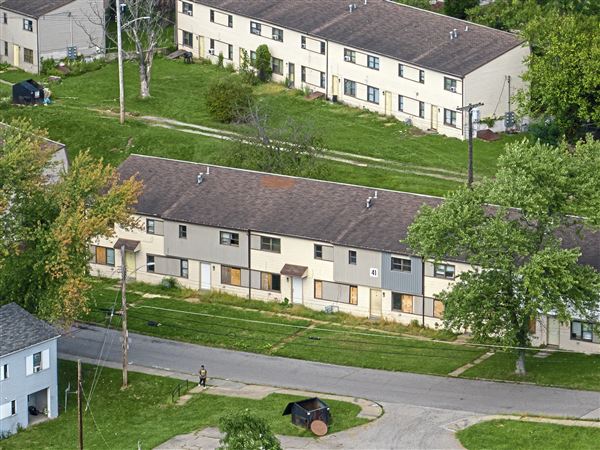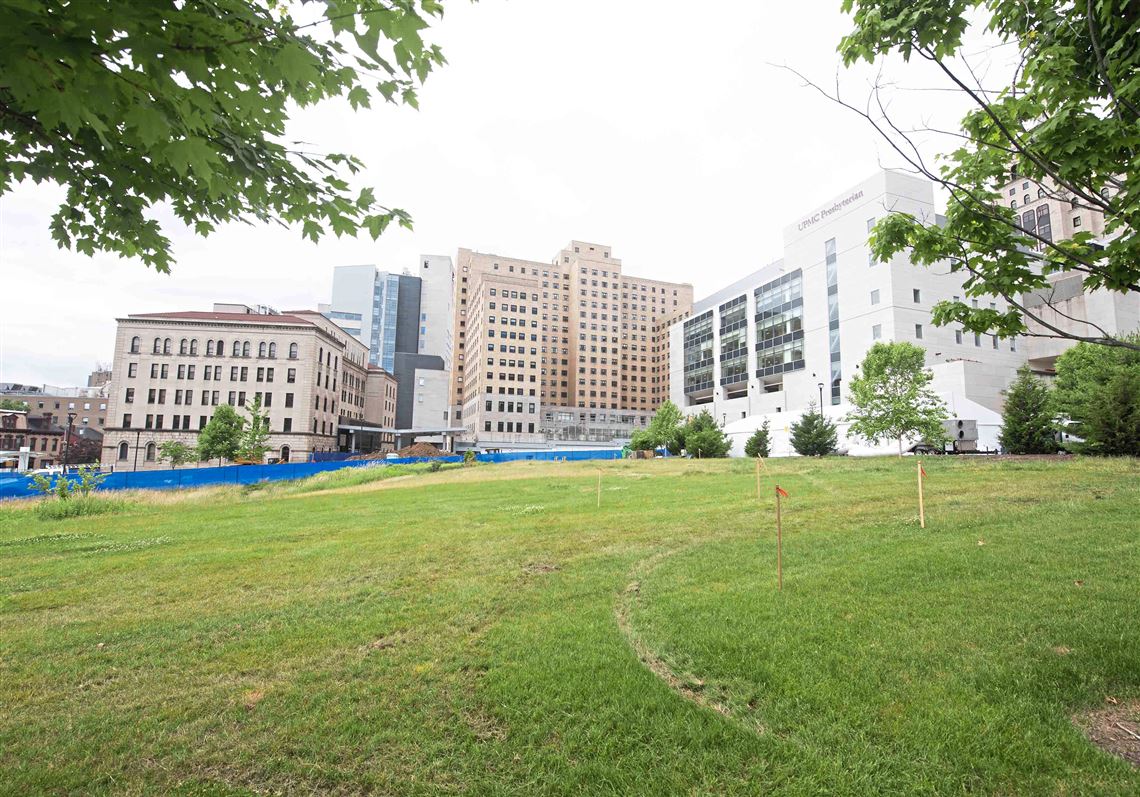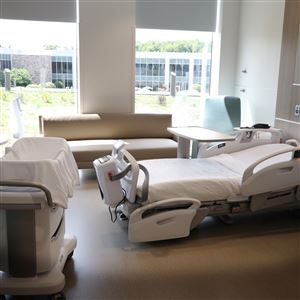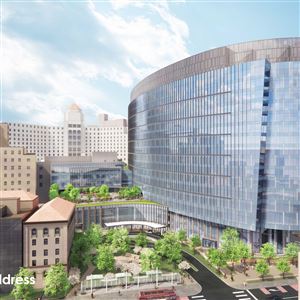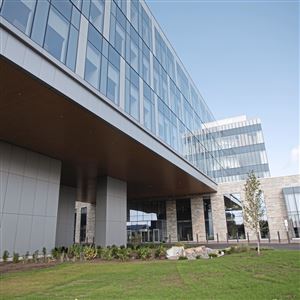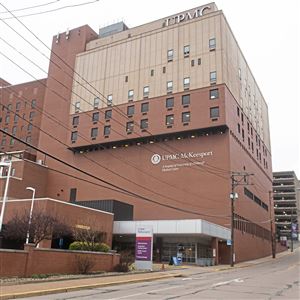UPMC’s new $1.5 billion hospital in Oakland — a 17-story, 636-bed, all-private patient room flagship institution for the sprawling Pittsburgh health care system — will boast technology and services to care for the most complex cases.
What the new UPMC Presbyterian Hospital won’t do is add a single new bed, a strategy aided by the specialty medical services the facility will offer.
The start of construction on the massive project was heralded with a groundbreaking Tuesday morning led by UPMC President and CEO Leslie C. Davis, Allegheny County Executive Rich Fitzgerald and other officials.
The hospital will put 880,000 square feet under one roof, with another 191,000 square feet for parking, retail and other uses. It will be bounded by Fifth Avenue and DeSoto Street, located in front of — and connected to — the current UPMC Presby Hospital.
In addition, nearby UPMC Montefiore Hospital, which is where organ transplantation is now done, will be converted to an outpatient and rehabilitation facility.
And though the new project — first announced in 2017 — comes at a time when health care systems are dealing with staffing shortages, supply chain issues and rising costs cutting into their bottom lines, officials seem confident that the new Presby will deliver on its promise when it opens in 2026.
“It’ll be one of the most transformative construction projects in the history of UPMC — a hospital of the future, designed for the patient,” UPMC Health Services Division President Mark Sevco said.
The new Presby will offer a full array of medical services while continuing to focus on organ transplants and specialized care for the heart, brain and spine.
Among other things, the hospital will be built with patient room technology that will give doctors quick access to medical records while allowing educational programming for patients.
Replacing UPMC Presbyterian was one of three projects the health care giant announced in 2017. The others were the construction of UPMC Mercy Pavilion in Uptown and of an eight-story patient tower and outpatient center at UPMC Hillman Cancer Hospital in Shadyside.
Construction of the nine-story Mercy Pavilion is underway, with occupancy expected in 2023.
“This is the second step in our promise to pursue ever evolving world-class care to this community,” UPMC board Chair G. Nicholas Beckwith said at the groundbreaking. “This is the UPMC story.”
Mr. Fitzgerald praised UPMC for its economic contribution to the region, saying “this is a great, great day, not just for the region, but the whole commonwealth of Pennsylvania.”
The new UPMC Presbyterian Hospital, which traces its history to 1893 on the city’s North Side, will be the biggest health care facility in the city, Ms. Davis said.
“UPMC is all about people-based care,” she said.
Construction of large new hospitals has slowed over the past couple of decades, even as some hospitals close and hospital systems have seen a growing number of mergers.
UPMC’s last hospital built from the ground up in Pennsylvania was UPMC Memorial Hospital in York, which opened in 2019 and has 98 beds. Before that, UPMC East in Monroeville, a 139-bed facility, opened in 2012.
UPMC — which has 7,317 patient beds across 40 hospitals — has not added new beds in Western Pennsylvania, even as rival Allegheny Health Network built four mini-hospitals in the Pittsburgh area and a 160-bed general acute care hospital in Pine.
Suburban North Hills, which includes Pine and features strip malls and leafy housing subdivisions, may be among the safest places in Western Pennsylvania: The area is served by four hospitals, competing medical helicopter and first-responder ground units, and five community ambulance services.
Studies from several years ago found that Western Pennsylvania had too many hospital beds. Last year, average daily occupancy rates were as low as 7% and as high as 70% at hospitals in Allegheny County, according to the Centers for Medicare and Medicaid Services.
Average daily hospital occupancy outside Allegheny County was also low — the average daily census at Butler Health System’s 60-bed Clarion Hospital, for example, was 18.3%.
However, during the height of the COVID-19 pandemic, many hospitals in the region exceeded capacity as the highly contagious disease sickened thousands of people.
Specialty medical hospitals — of the type that the new Presby hospital will be — generally require fewer beds than a general acute-care hospital, said Harold Miller, president and CEO of the Center for Healthcare Quality and Payment Reform, a Downtown-based consultant.
“Beds are an increasingly bad measure of what hospitals do,” he said. “An increasing number of hospital procedures are being done on an outpatient basis, which has absolutely nothing to do with number of beds.”
Specialty hospital beds are generally filled more often than those of general acute hospitals, partly because specialty hospitals draw patients from outside Western Pennsylvania. Most community hospitals ringing Pittsburgh are categorized as general acute care, which are designed to meet a wide variety of medical needs.
Mark Goodman, a retired orthopedic oncologist who practiced at UPMC Shadyside Hospital, said patients routinely came to that facility from outside the area for bone cancer, a medical subspecialty that’s not often available at smaller, general acute care hospitals.
In addition to adding new treatment technology, the new Presby is slated to offer improvements things like dining services what Mr. Sevco calls the “patient experience.”
The hospital will also have a fitness center for patients and staff.
Kris B. Mamula: kmamula@post-gazette.com or 412-263-1699
First Published: June 14, 2022, 3:00 p.m.
Updated: June 15, 2022, 12:00 p.m.



